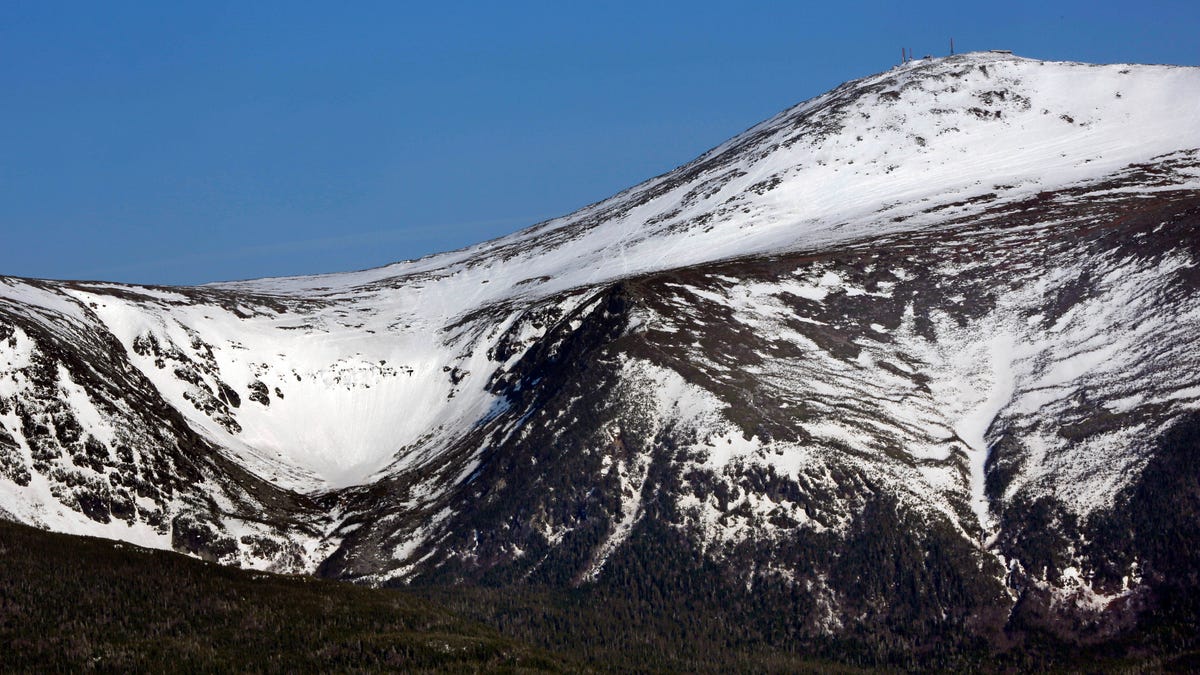A backcountry skier died after falling about 600 feet down a ravine on New Hampshire’s Mount Washington over the weekend amid hard and icy conditions, officials said Sunday.
On Saturday, Madison Saltsburg, 20, fell roughly 600 feet down the Tuckerman Ravine, a glacial cirque on the southeast face of Mount Washington, according to a news release from the U.S. Forest Service. Saltsburg “suffered fatal traumatic injuries” and was evacuated off the mountain by teams from the Mount Washington Avalanche Center and U.S. Forest Service.
The steep bowl draws thousands of skiers, snowboarders, and hikers each year, according to the New Hampshire Division of Travel and Tourism Development. Known for its deep snow and challenging terrain, the ravine is a popular spot for backcountry skiers and snowboarders.
But the U.S. Forest Service said firm and icy conditions due to lack of recent snow and cold temperatures created dangerous conditions in the bowl over the weekend. Several accidents occurred on Saturday, prompting hourslong search efforts as rescuers faced heavy, wet snow, and winds.
“Throughout the year, this very steep ski mountaineering terrain, and other areas around Mount Washington, are subject to ever-changing mountain hazards,” according to the U.S. Forest Service. “These commonly include avalanches, open crevasse holes, icy steep slopes, and falling rocks and ice.”
California blizzard: How much snow fell in Northern California and the Sierra Nevada? Snowfall over 7 feet
‘Unforgiving conditions for a slip and fall’
Saltsburg and her skiing companion were faced with “hard, icy snow surfaces, open crevasse holes, and unforgiving conditions for a slip and fall,” the U.S. Forest Service said.
Colleen Mainville, a spokesperson with the U.S. Forest Service, told The Associated Press that snow rangers and emergency personnel had been in the mountain late Saturday. “They’re exhausted,” Mainville said.
Snow rangers also responded to two other skiers who suffered traumatic injuries after falling down and hitting rocks and ice, according to the U.S. Forest Service. Their injuries were non-life threatening, Mainville said.
In addition to those incidents, the U.S. Forest Service said there were multiple falls witnessed throughout the day that did not result in serious injuries.
Mount Washington known for challenging conditions
Tuckerman Ravine is most popular during the spring when the sun begins to soften the snow. On some days, hundreds of skiers and snowboarders make the 3-mile hike to the ravine.
But at 6,288 feet, Mount Washington is the tallest peak in the Northeast and is often a site for rescues. While the avalanche forecast on Saturday was low, according to the U.S. Forest Service, springtime mountain hazards had posed a significant risk for visitors.
On Friday, a 23-year-old hiker from Kentucky was rescued from the mountain after going off trail and into the Ammonoosuc Ravine, New Hampshire Fish and Game reported. The hiker “fell and hit his head and face, lost one of his sneakers, and eventually became hypothermic,” the agency said in a statement.
In February, another hiker was rescued from the Ammonoosuc Ravine after hitting a patch of snow-covered ice and sliding hundreds of feet down the ravine. The incident sparked a rescue mission that would last 11 hours and the hiker later admitted that he was unprepared for the hike.
Snow sports come with risks: Palisades avalanche near Lake Tahoe is a reminder of the dangers of snow sports
Dangers of snow sports
Numerous incidents involving snow sports have made national headlines in recent years, including an avalanche that barreled down a California ski resort near Lake Tahoe, killing one and injuring three others in January. Later in that same month, first responders in Vermont rescued 23 skiers and snowboarders from the backcountry amid deadly temperatures.
The incidents reminded winter recreationists across the country of the dangers of snow sports. Skiers and snowboarders have been advised by industry experts, such as the National Ski Areas Association, to be aware of dangerous weather, changing snow conditions, machinery working on slopes, and other recreationists.
Over the 2022-23 U.S. ski season, the organization reported 46 skier and snowboarder fatalities in ski areas. The total number of fatalities for the season was slightly higher than the 10-year industry average of 42 fatalities a season, according to the group.
The primary factors of fatal incidents included speed, loss of control, and collisions with objects on slopes. The season also had record-breaking snowfall, the ski areas association said, which contributed to an “unusually high number” of deep-snow immersion fatalities.
Contributing: Christopher Cann, USA TODAY; The Associated Press

Amanda Smith is a dedicated U.S. correspondent with a passion for uncovering the stories that shape the nation. With a background in political science, she provides in-depth analysis and insightful commentary on domestic affairs, ensuring readers are well-informed about the latest developments across the United States.







